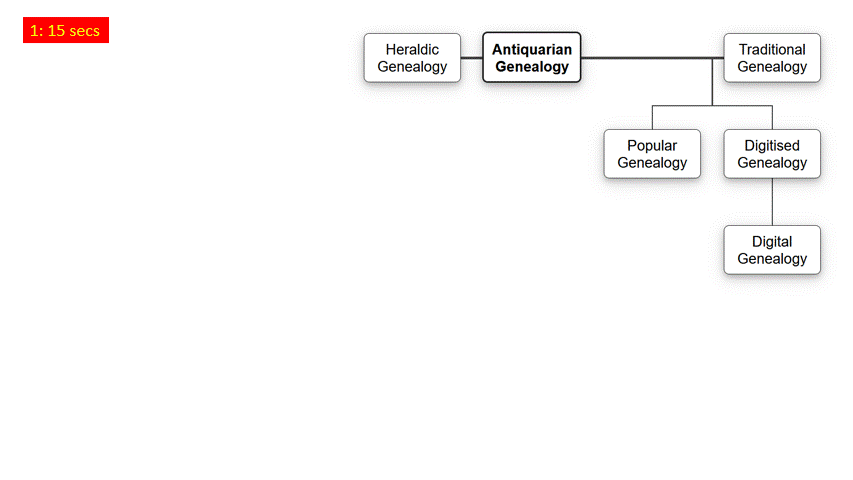Appreciating genealogy in the digitised age through second-wave Digital Humanities.

Digital Humanities encompasses the toolkits, techniques and resources that emerged from the use of computers within humanities academia since the mid-twentieth century. Digital Humanities has become a multi-disciplinary space linking subjects to the science and outputs of mass data. It has developed capabilities to perceive patterns, arrange information that was previously fractured in its purpose, production, maintenance, and survival. The core materials used by genealogy are a prime example of this situation.
The census, birth, marriage, and death records were developed at different times for diverse reasons, with subtle differences between national jurisdictions. The parish records were designed for a specific task within a particular socio-cultural space, the later national population record systems were invented and applied to achieve other goals. Yet, genealogy can bring those records together. Genealogy in the digital era can do so on a mass scale and then access a broad set of additional indicative materials to enhance the resource. Shown Mill’s saw the intersection of genealogy and the digital at the turn of the century and generated important observations.
The multidisciplinary space of Digital Humanities has rapidly evolved across a few decades during which it has challenged orthodox thinking through the assembly, visualisation, and evaluation of large data. The stages of evolution have been labelled first, second and third wave.
The first wave was all about quantification and methods to handle it.
The second wave is focused on five manifestations: qualitative, generative, interpretative, experiential, and emotive.
Theory of third wave Digital Humanities is just emerging.